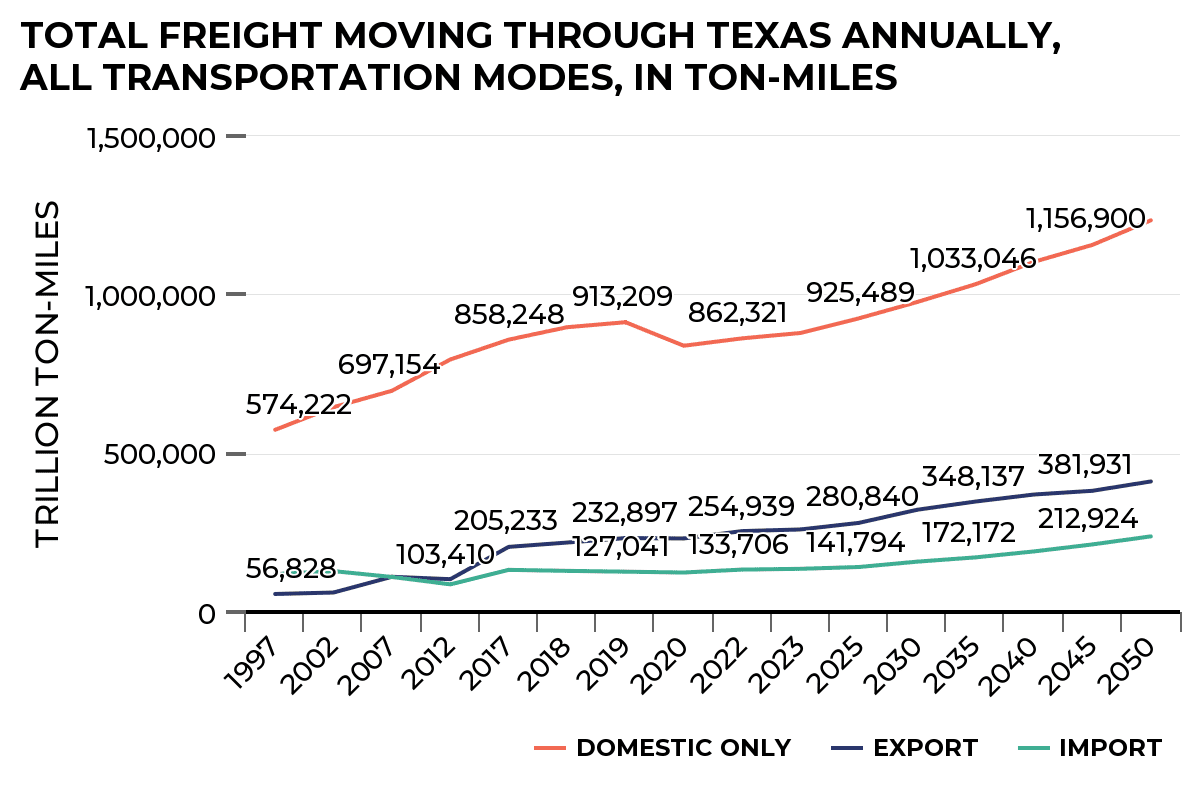Roads, broadband, electricity and the TX economy: Strategic Framework
This look at infrastructure is the third of our seven-part blog series, “Strategic Framework: 7 Key Findings,” which highlights some of the most compelling data from our new Strategic Framework.
POLICY AREA: Infrastructure
Reliable and varied infrastructure is the backbone of the Texas economy
Texas’ critical infrastructure includes roads, bridges, railways, mass transit systems, seaports, airports, pipelines and lines carrying data and electricity.
Our state’s population is projected to increase nearly 25% by 2036 to more than 38 million residents — a massive influx of people that will put Texas’ infrastructure to the test.
Millions of working Texans — and 1.2 trillion ton-miles of freight — depend on Texas’ transportation infrastructure, especially its roads.
In 2019, travel on Texas roads cost $194 billion, including time, fuel and vehicle costs. Prior to the pandemic, traffic congestion cost the Texas commuter $1,120 a year on average.

But roads alone cannot meet our needs: a diverse, multimodal transit network, including seaports, railways and airports, is essential to Texas’ future economic growth and opportunity.
Further, digital connectivity, access to broadband and digital literacy should be considered 21st-century infrastructure.
These are no longer luxuries but necessities to participate in the modern-day economy: they are increasingly necessary to access health care, education and economic opportunity.
The current Federal Communications Commission broadband standard is download speeds of at least 25 megabits per second, or Mbps. However, the needs of households and businesses have surpassed this minimum, especially during and after the pandemic.
Statewide access to 100 Mbps, which better supports connectivity needs, is 93.55% but only around 83% across rural Texas.
A reliable, cost-effective electric infrastructure is also critical to power the economy and supply homes and businesses.
Today, however, while Texas has low electricity rates, we also have the highest residential electricity bills due to usage, $132 per month on average, and the worst federally rated reliability metrics — including System Average Interruption Frequency Index and System Average Interruption Duration Index — relative to Texas’ peer states.
Because indicators update frequently, please visit the Strategic Framework at framework.texas2036.org to view the most up-to-date trends.
Because metrics update frequently, please visit the Strategic Framework at framework.texas2036.org to view the most up-to-date trends.
